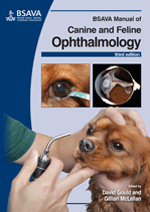
Full text loading...

This chapter considers disorders of vision, pupillary size, position and movement of the eyelids and globe, and lacrimation. The anatomical and physiological importance of these functions is presented alongside the principles and methods involved in their clinical assessment. This is followed by a discussion of the diseases and syndromes in which these manifestations occur.
Neuro-ophthalmology, Page 1 of 1
< Previous page | Next page > /docserver/preview/fulltext/10.22233/9781910443170/9781910443170.19-1.gif

Full text loading...



































